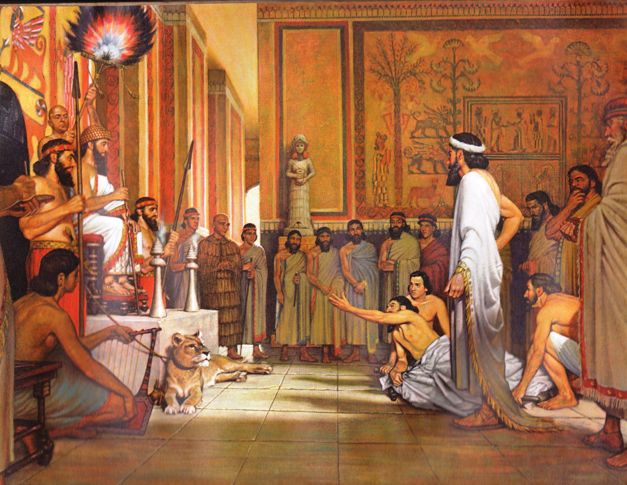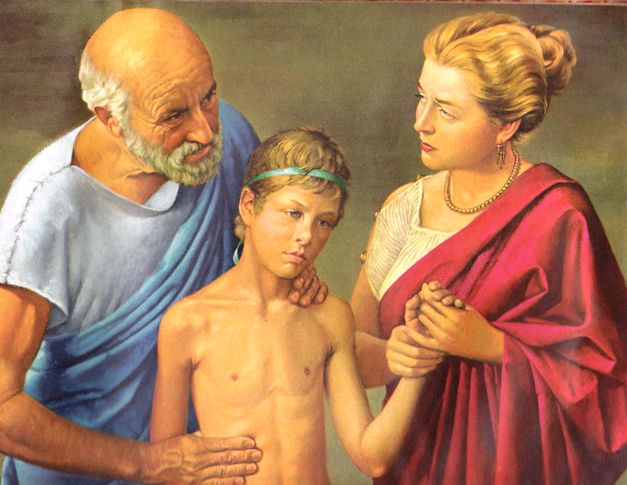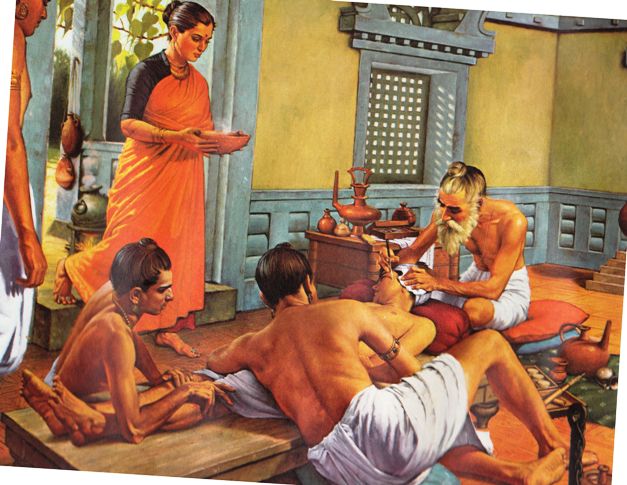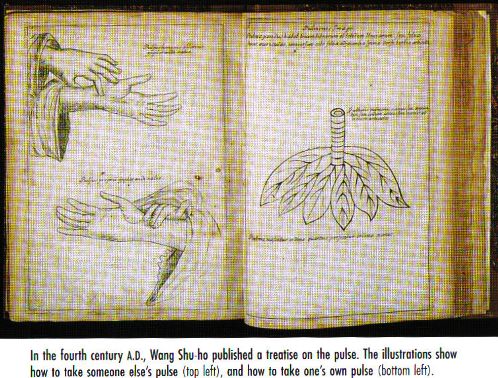A VERY BRIEF OVERVIEW OF THE HISTORY OF MEDICINE
(1: Prehistory to Renaissance)
Adam Blatner, M.D.
To see Lecture 1:Introduction, the Invention of the Microscope, the foundations of Germ Theory.
1a: A related webpage has more pictures and further very brief history from the 1600s to the Present...
and another webpage on the further history of the microscope.
Lecture 2: Infection, Germ Theory, Antisepsis in Surgery
Lecture 3 The Beginnings of Immunology
Lecture 4 Lecture 5 Lecture 6.
January 26, 2009 (Revised and Re-posted, January 30, 2009)
In prehistoric times---before cultures had history--i.e., writing, a somewhat more reliable format for transmitting stories--, healing was integrated with the tribe's general cultural belief system, religion, view of nature than they are in recent centuries.
| Navajo healing, even recently, involves a
psycho-spiritual re-alignment. The patient is on an elaborately
constructed sand painting. |
Skulls found in various archeological digging suggested that trephining was used, probably medically, to relase evil spirits and also as an unintended positive consequence, to decompress swollen brain tissues or release a blood clot. The dull edges of the wounds suggest that the bone had time to grow back,
| About 1000 -2400 BCE., 3000 - 4400 years ago. |
 |
| The Assyrian king, Hammurabi, around 1800 BCE, created a law code for medical practice. |
Greek Medicine:
 |
| Hippocrates, "The Father of Medicine,"
and his school on the Greek isle of Cos, left a body of writings that
was used as authoritative throughout the Mediterranean for over a
millenium. |
Roman Medicine:
 |
| Galen's work around 140 AD in Rome ended up
being authoritative in Europe until the 16th century! Here is is using
the technique of "cupping," creating small vacuums in heated cups to
"draw the poisons out." This technique continued in folk culture
through the early 20th century. |
| Suturing a wound, from a mosaic on a wall in Pompeii. |
India & China:
 |
| A noted physician in India, Shushutra, was known for a range of writings. |
 |
|
| India: Healing a wound. |
Middle Ages through Early Renaissance
Then there was bleeding, a practice that "got the bad humors out," rebalanced them (the humors): Not only were there different sites for bleeding, depending on the illness... but the bleeding needed to be done when it was auspicious, depending on the constellations and time of year.
| |
Renaissance Medicine
Finally there were those who questioned authority. Oddly enough, some of them came up with theories that seem today to be just as far out as the theories that were questioned.
... That's enough for this webpage. In the first lecture we reviewed some other pioneers, such as the early microscopists, Leeuwenhoek, Hooke, etc.
In the next addendum webpage on the overview of medicine, some of the highlights of more contemporary developments are included.